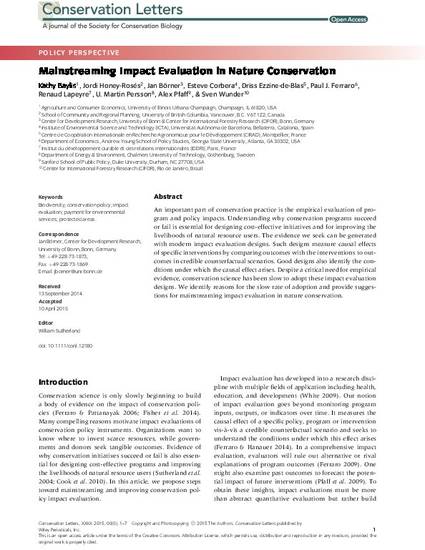
Article
Mainstreaming impact evaluation in nature conservation
Conservation Letters
(2015)
Abstract
An important part of conservation practice is the empirical evaluation of program and policy impacts. Understanding why conservation programs succeed or fail is essential for designing cost-effective initiatives and for improving the livelihoods of natural resource users. The evidence we seek can be generated with modern impact evaluation designs. Such designs measure causal effects of specific interventions by comparing outcomes with the interventions to outcomes in credible counterfactual scenarios. Good designs also identify the conditions under which the causal effect arises. Despite a critical need for empirical evidence, conservation science has been slow to adopt these impact evaluation designs. We identify reasons for the slow rate of adoption, and provide suggestions for mainstreaming impact evaluation in nature conservation.
Keywords
- Biodiversity,
- Conservation Policy,
- Evidence,
- Impact Evaluation,
- Policy Effectiveness,
- Payment for Environmental Services,
- Protected Areas
Publication Date
2015
Citation Information
Kathy Baylis, Jordi Honey-Roses, Jan Boerner, Esteve Corbera, et al.. "Mainstreaming impact evaluation in nature conservation" Conservation Letters (2015) Available at: http://works.bepress.com/kathy_baylis/64/
